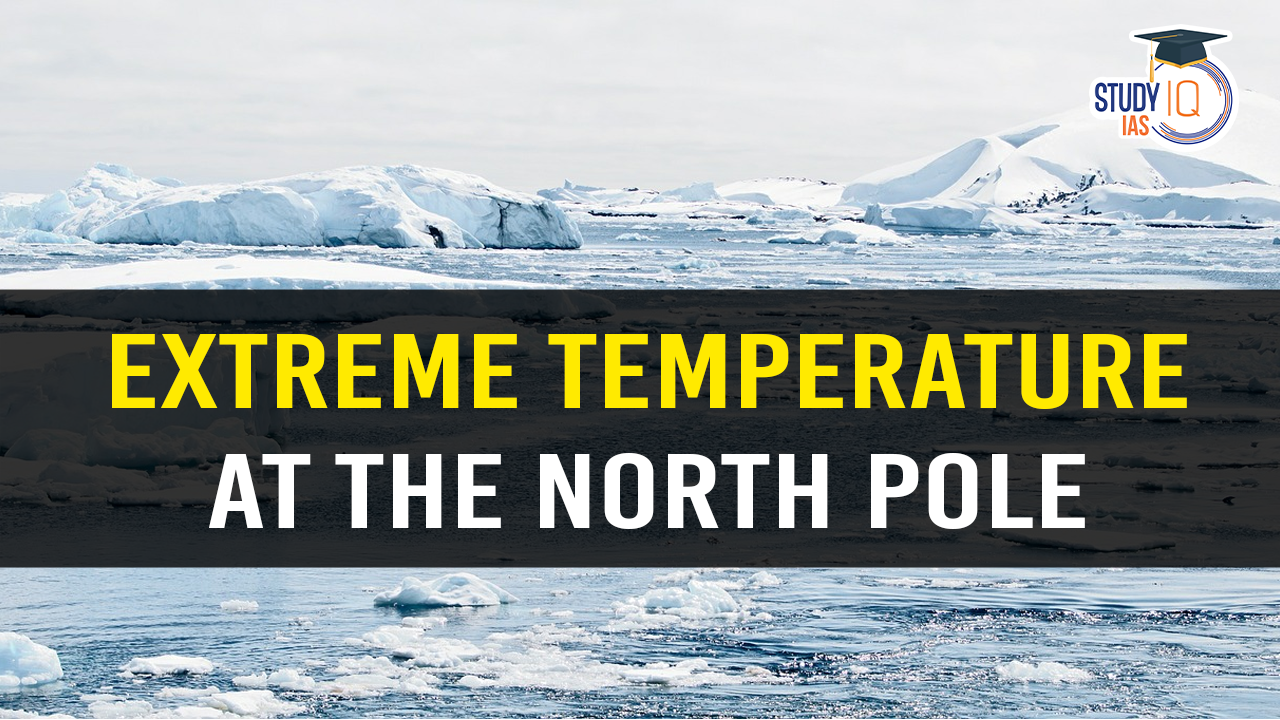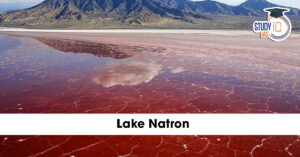Table of Contents
Context: Recently temperatures at the North Pole rose more than 20°C above average. The northern Svalbard region (Norway) recorded temperatures 18°C above the 1991–2020 average.
Why Did the North Pole Experience Such High Temperatures?
Low-Pressure System Over Iceland
- A deep low-pressure system (an area of lower atmospheric pressure) over Iceland created conditions for warm air to move into the Arctic.
- This system acted as a gateway for warm air from lower latitudes to enter the polar region, raising temperatures.
Unusually Warm Sea Surface Temperatures
- The northeast Atlantic Ocean experienced hotter-than-normal sea surface temperatures, which:
- Strengthened wind-driven warming in the Arctic.
- Contributed to the intensification of the warming event.
| Arctic’s Role in Global Climate Regulation |
|
Why Is the Arctic Warming Faster Than the Global Average?
Rapid Arctic Warming Since the 1970s
- Since 1979, the Arctic has warmed 4 times faster than the global average.
- A 2022 study showed that the Arctic has warmed 8 times faster than the global mean temperature since the late 1970s.
- In contrast, global temperatures have increased by 1.3°C compared to the 1850–1900 baseline.
The Albedo Effect (Sunlight Reflection Mechanism)
- Sea ice reflects sunlight due to its bright white surface, keeping temperatures low.
- As the ice melts, darker land and ocean surfaces are exposed, which absorb more heat, leading to further warming.
- This self-reinforcing feedback loop is accelerating temperature rise in the Arctic.
Weak Atmospheric Convection in the Arctic
- Convection (heat transfer via rising warm air) is weaker in the Arctic compared to the tropics.
- In the tropics, strong convection occurs due to intense sunlight, which distributes heat throughout the atmosphere.
- In the Arctic, weak convection means:
- The heat from greenhouse gases remains trapped near the surface instead of being distributed upwards.
- This results in more concentrated warming at ground level.
| Geography Related Important Links | |
| Evolution of Earth | Geomorphic Process |
| Plate Tectonic Theory | Earthquakes in India |
| Climatology | Heat Budget of Earth |


 Places in News for UPSC 2026 for Prelims...
Places in News for UPSC 2026 for Prelims...
 Lake Natron: Location, Features, Wildlif...
Lake Natron: Location, Features, Wildlif...
 Erra Matti Dibbalu Added to UNESCO Tenta...
Erra Matti Dibbalu Added to UNESCO Tenta...

























